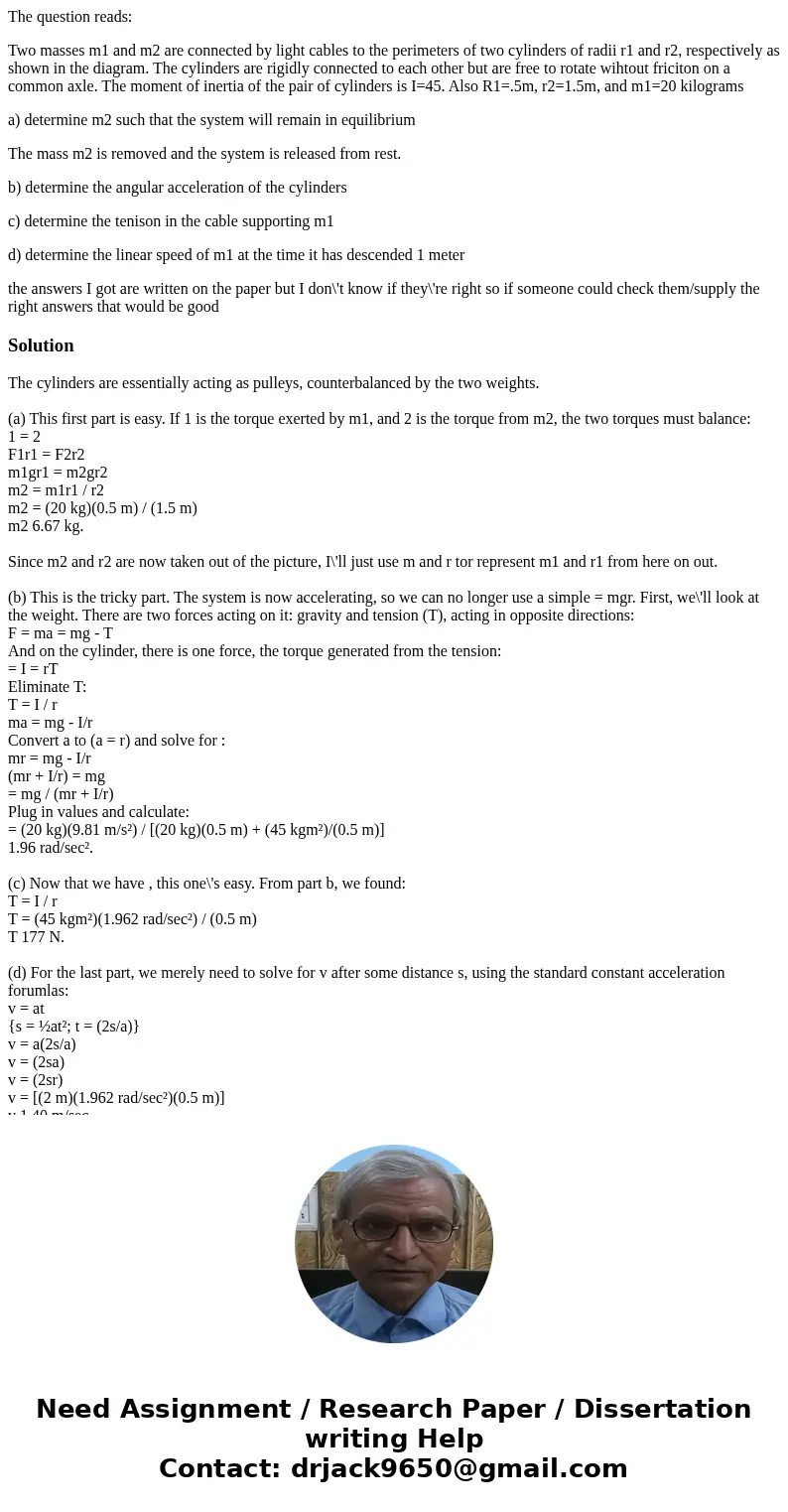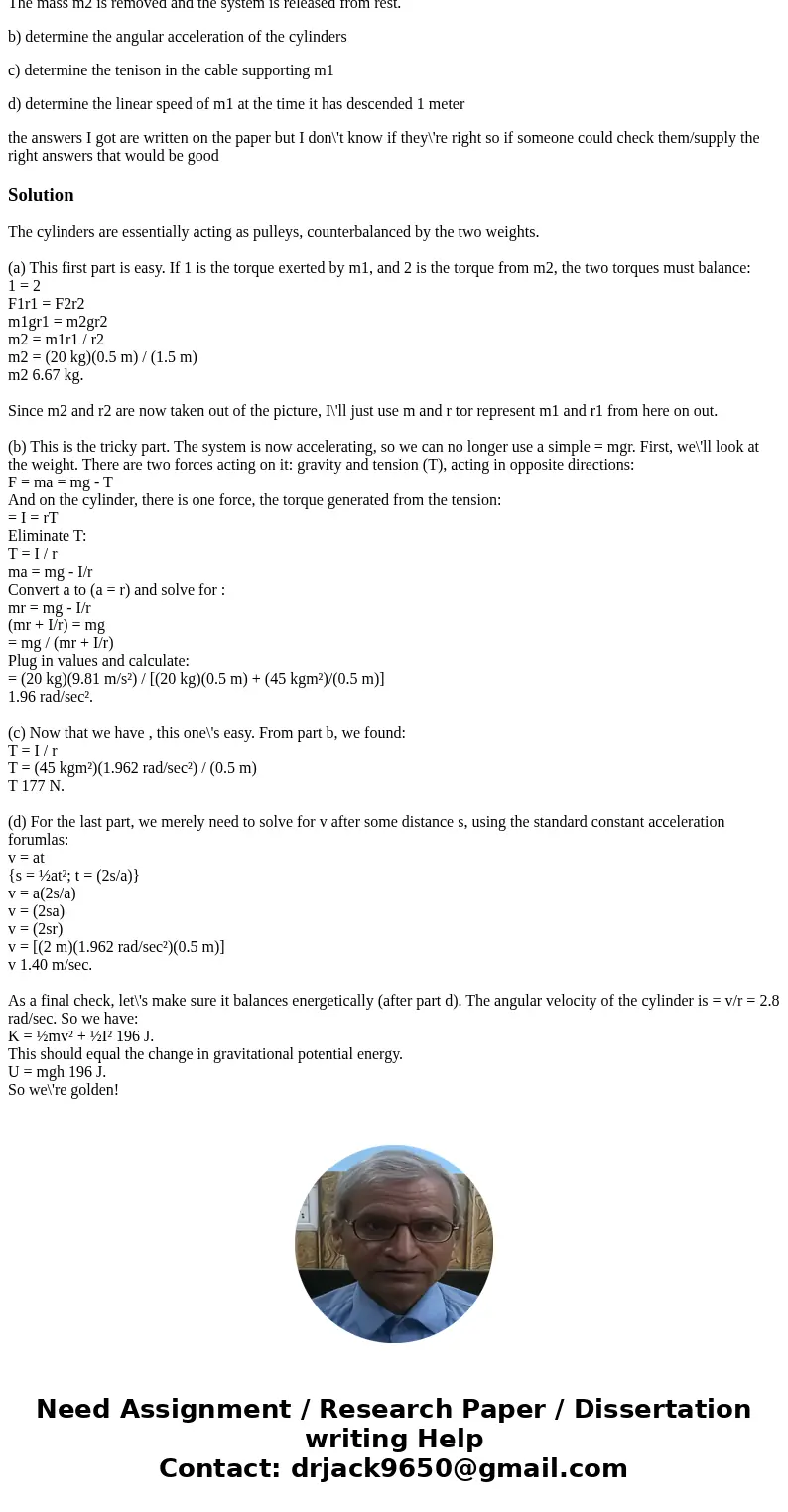The question reads Two masses m1 and m2 are connected by lig
The question reads:
Two masses m1 and m2 are connected by light cables to the perimeters of two cylinders of radii r1 and r2, respectively as shown in the diagram. The cylinders are rigidly connected to each other but are free to rotate wihtout friciton on a common axle. The moment of inertia of the pair of cylinders is I=45. Also R1=.5m, r2=1.5m, and m1=20 kilograms
a) determine m2 such that the system will remain in equilibrium
The mass m2 is removed and the system is released from rest.
b) determine the angular acceleration of the cylinders
c) determine the tenison in the cable supporting m1
d) determine the linear speed of m1 at the time it has descended 1 meter
the answers I got are written on the paper but I don\'t know if they\'re right so if someone could check them/supply the right answers that would be good
Solution
The cylinders are essentially acting as pulleys, counterbalanced by the two weights.
(a) This first part is easy. If 1 is the torque exerted by m1, and 2 is the torque from m2, the two torques must balance:
1 = 2
F1r1 = F2r2
m1gr1 = m2gr2
m2 = m1r1 / r2
m2 = (20 kg)(0.5 m) / (1.5 m)
m2 6.67 kg.
Since m2 and r2 are now taken out of the picture, I\'ll just use m and r tor represent m1 and r1 from here on out.
(b) This is the tricky part. The system is now accelerating, so we can no longer use a simple = mgr. First, we\'ll look at the weight. There are two forces acting on it: gravity and tension (T), acting in opposite directions:
F = ma = mg - T
And on the cylinder, there is one force, the torque generated from the tension:
= I = rT
Eliminate T:
T = I / r
ma = mg - I/r
Convert a to (a = r) and solve for :
mr = mg - I/r
(mr + I/r) = mg
= mg / (mr + I/r)
Plug in values and calculate:
= (20 kg)(9.81 m/s²) / [(20 kg)(0.5 m) + (45 kgm²)/(0.5 m)]
1.96 rad/sec².
(c) Now that we have , this one\'s easy. From part b, we found:
T = I / r
T = (45 kgm²)(1.962 rad/sec²) / (0.5 m)
T 177 N.
(d) For the last part, we merely need to solve for v after some distance s, using the standard constant acceleration forumlas:
v = at
{s = ½at²; t = (2s/a)}
v = a(2s/a)
v = (2sa)
v = (2sr)
v = [(2 m)(1.962 rad/sec²)(0.5 m)]
v 1.40 m/sec.
As a final check, let\'s make sure it balances energetically (after part d). The angular velocity of the cylinder is = v/r = 2.8 rad/sec. So we have:
K = ½mv² + ½I² 196 J.
This should equal the change in gravitational potential energy.
U = mgh 196 J.
So we\'re golden!


 Homework Sourse
Homework Sourse